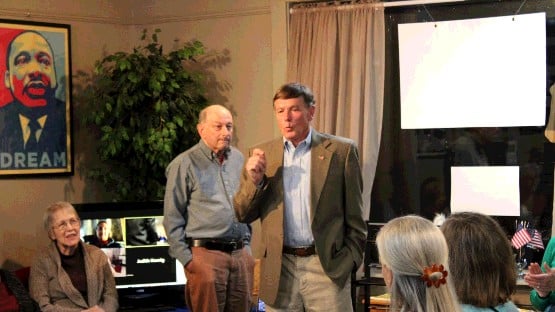
“Furrowed eyebrows” may not technically be a mood, but it’s how Eastern Mennonite University sophomore engineering major Ben Stutzman described the atmosphere when his team was competing in the Kryptos cryptoanalysis competition in early April.
“We knew some things we could try right away, but there was a lot of pondering,” he said.
The thinking paid off, as the team of three – Stutzman and math and computer science majors first-year Cameron Byer and sophomore Daniel Harder – took first place over 60 other teams from three countries on three puzzles.
Only four teams solved all three puzzles within the five-day contest window, with EMU’s winning trio submitting correct answers first and in less than 20 hours – and that’s without pulling an all-nighter. After a 7 p.m. start on Thursday, April 5, they submitted their answer to the first puzzle, and then saved the following two puzzles for the next day.
The annual Kryptos contest, hosted since 2011 by the mathematics department at Central Washington University in Ellensburg, was sponsored by the Pacific Northwest Section of the Mathematical Association of America.
Teams could use books, the internet and computer programs – but no living person other than a teammate – to solve the challenges. Along with their correct answers, they were required to describe how they reached a solution and list any sources used.
Discrete math proved most useful, Byer said, but the open-ended nature of the coded messages required lots of “trying this, trying that” until hitting on breakthroughs.
In one problem, they were provided with a series of personal ad clippings, only one of which contained a coherent phrase: “Knowledge is Power.” That, they discovered, was a quote by Francis Bacon, and a clue that finding the solution would involve using Bacon’s cipher. The rest of the ad contents, they noticed, were all five letters long and completely nonsensical – binary encryption, they realized.
In another, an invitation to a Stephen Hawking memorial celebration invited attendees to “bring something to grille,” a subtle suggestion that a “turning grille” would prove useful.
And the remaining puzzle required contestants to decipher incoherent text to find a keyword “chicken” for decoding a message. Harder wrote a computer program to sort through thousands of possible keyword solutions to the Vigenere cipher.
The contest showed the importance of using creativity to solve problems, Stutzman said – and, added Byer, teamwork and camaraderie.
After repeated attempts at breaking the codes would end in “gibberish,” said Byer, finding a sensical answer was exciting – for example when their teammate Harder figured out the “Knowledge is Power” message: “‘Denver!’ I got ‘Denver!’ ‘Ruby Hill!’ ‘Seven p.m.!’”
It’s not the first time an EMU team has taken first place. In 2014, EMU teams took both first and third place. That year Byer was on the third-place finishing team – as a freshman at Eastern Mennonite High School.










